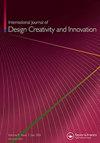我们可以从新冠肺炎疫情中学到什么来进行设计创意研究?
IF 2.5
Q4 ENGINEERING, MANUFACTURING
International Journal of Design Creativity and Innovation
Pub Date : 2020-07-02
DOI:10.1080/21650349.2020.1771867
引用次数: 5
摘要
在不到四分之一的时间里,也就是IJDCI连续两期之间的时间,新冠肺炎的爆发突然彻底改变了几乎每个人的生活。世界卫生组织的每日报告描述了全球范围内的戏剧性情况(截至5月15日,报告的病例超过440万例,死亡约30万例),世界各地的日常生活画面也同样令人印象深刻。在很短的时间内,人们不得不从根本上改变他们的习惯,适应他们没有做好准备的环境(图1)。对医疗领域发生的事情的分析超出了本杂志的范围。然而,很明显,任何级别的组织(不仅是与健康相关的),就像复杂的系统和简单的日常产品一样,都不适合疫情,人们制定的大多数即兴解决方案很大程度上是由于个人的直觉和努力。对于改进下一代产品、系统和组织的设计,可以学到什么?设计创意在确保社会及其手段的弹性方面的实际贡献是什么?设计研究是否具有良好的导向性和结构,以提高人类应对意外的能力?关于如何应对可能随之而来的全球经济危机的辩论才刚刚开始,但其影响可能远远超出经济学:我们可能正处于社会、政治、经济和教育生活的转折点。之后一切都可能大不相同。有趣的是,设计界多年来一直在争论我们现在所观察到的变化速度。尽管如此,只有少数科幻作家想象过,由于疫情,人们的日常生活会发生如此突然的革命,从这次经历中可以学到很多东西。这是一个机会,可以将创造力在为社会福祉寻找新解决方案、生产负责任和可持续的设计以提高我们组织的韧性方面的著名作用转化为实践。毕竟,在古希腊语中,与“危机”一词在当今语言中的使用方式相比,“克里西斯”一词并没有负面含义。Krisis过去不仅指分离,还指反思和评估。为了进一步发展这一雄心,IJDCI编辑咨询委员会成员Nathan Crilly建议使用Arundhati Roy在(Roy,2020)中的结束语:“从历史上看,流行病迫使人类与过去决裂,重新想象自己的世界。这一次也没什么不同。它是一个门户,一个连接一个世界和另一个世界的门户。我们可以选择走过它,把我们的偏见和仇恨、我们的贪婪、我们的数据库和死去的想法、我们死去的河流和烟雾弥漫的天空拖到身后。或者我们可以带着小小的行李,轻松地走过,准备想象另一个世界。IJDCI杂志希望为这场辩论做出贡献,发表立场文件和公开信,对设计研究界应该采用的新做法提出建设性的思考,以便更熟练地进行互动,更好地针对我们的研究工作,并对社会产生更实实在在的影响。作为第一步,国际联合会编辑委员会和指导咨询委员会应邀分享他们从最近的经验中得出的初步想法。特别是,我们要求根据目前对新冠肺炎给社会带来的挑战的理解和认识,对以下几点进行反思:本文章由计算机程序翻译,如有差异,请以英文原文为准。
What can we learn from COVID-19 pandemic for design creativity research?
In less than a quarter, the time between two consecutive issues of IJDCI, the COVID-19 outbreak has suddenly revolutionized the life of almost every human being. The daily reports by the World Health Organization depict a dramatic situation at a global level (more than 4,4 million cases and about 300 thousand deaths reported until May 15) and pictures of everyday life from all over the world are not less impressive. In a very short time, people had to radically change their habits and adapt to circumstances they were not prepared for (Figure 1). The analysis of what happened in the medical sector is out of the scope of this journal. However, it is apparent that organizations at any level (not only health-related), just like complex systems as well as simple every-day products, turned out to be unfit for the pandemic and most of the improvised solutions people put in place were largely due to individuals’ intuition and endeavor. What could be learned for improving the design of the next products, systems, organizations? What is the actual contribution of design creativity in ensuring the resilience of society and its means? Is design research well-oriented and structured to improve the humans’ capacity to cope with unexpectedness? The debate on how to face the global economic crisis that might follow is just at the beginning, but the impact is likely to go way beyond economics: we might be in the turning point of our social, political, economical, and educational life. Everything could be significantly different afterward. It is interesting to notice that the design community has been debating for many years about the speed of changes we are observing nowadays. Nevertheless, only a few science fiction writers had imagined such a sudden revolution in people daily life due to a pandemic and there is a lot to learn from this experience. This is an opportunity to turn into practice the so celebrated role of creativity in finding new solutions for the wellbeing of society, in producing responsible and sustainable design to increase the resilience of our organizations. After all, in ancient Greek, the term ‘krisis’ did not have a negative connotation compared with how the term ‘crisis’ is used in today’s languages. Krisis used to refer not only to separation, but also to reflection and assessment. To further develop this ambition, Nathan Crilly, member of the editorial Advisory Board of IJDCI, suggested the closing paragraph by Arundhati Roy in (Roy, 2020): ‘Historically, pandemics have forced humans to break with the past and imagine their world anew. This one is no different. It is a portal, a gateway between one world and the next.We can choose to walk through it, dragging the carcasses of our prejudice and hatred, our avarice, our data banks and dead ideas, our dead rivers and smoky skies behind us. Or we can walk through lightly, with little luggage, ready to imagine another world. And ready to fight for it.’ The IJDCI journal would like to contribute to this debate hosting position papers, as well as open letters, that propose constructive reflections on new practices the design research community should adopt to interact more proficiently, to target better our research endeavor, and to have a more tangible impact on society. As a first step, the Editorial and the Steering Advisory Boards of IJDCI were invited to share their preliminary thoughts emerging from the recent experience. In particular, we asked for reflections on the following points with the current understanding and awareness of the challenges that COVID-19 introduces to society:
求助全文
通过发布文献求助,成功后即可免费获取论文全文。
去求助
来源期刊

International Journal of Design Creativity and Innovation
ENGINEERING, MANUFACTURING-
CiteScore
3.80
自引率
27.80%
发文量
15
期刊介绍:
The International Journal of Design Creativity and Innovation is an international publication that provides a forum for discussing the nature and potential of creativity and innovation in design from both theoretical and practical perspectives. Design creativity and innovation is truly an interdisciplinary academic research field that will interest and stimulate researchers of engineering design, industrial design, architecture, art, and similar areas. The journal aims to not only promote existing research disciplines but also pioneer a new one that lies in the intermediate area between the domains of systems engineering, information technology, computer science, social science, artificial intelligence, cognitive science, psychology, philosophy, linguistics, and related fields. The journal covers, but is not restricted to, the following topics: ·Theories on Design Creativity and Innovation ·Cognition of Design Creativity ·Innovative Process ·Inventive Process ·Analogical Reasoning for Design Creativity and Innovation ·Design Synthesis ·Method and Tools for Design Creativity and Innovation ·Representation of Design Creativity and Innovation ·Education for Design Creativity and Innovation ·Concept Generation and Inspiration.
 求助内容:
求助内容: 应助结果提醒方式:
应助结果提醒方式:


